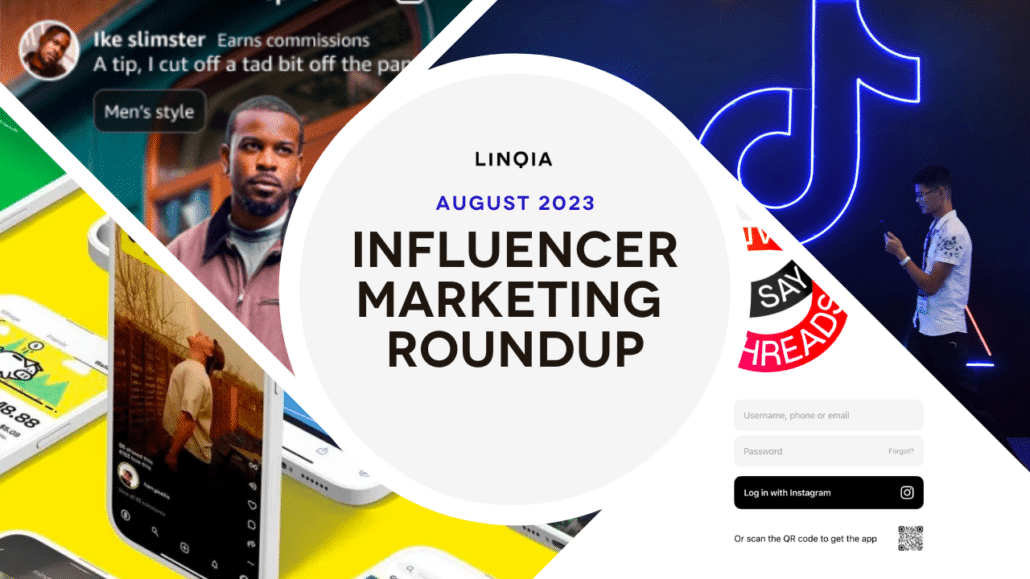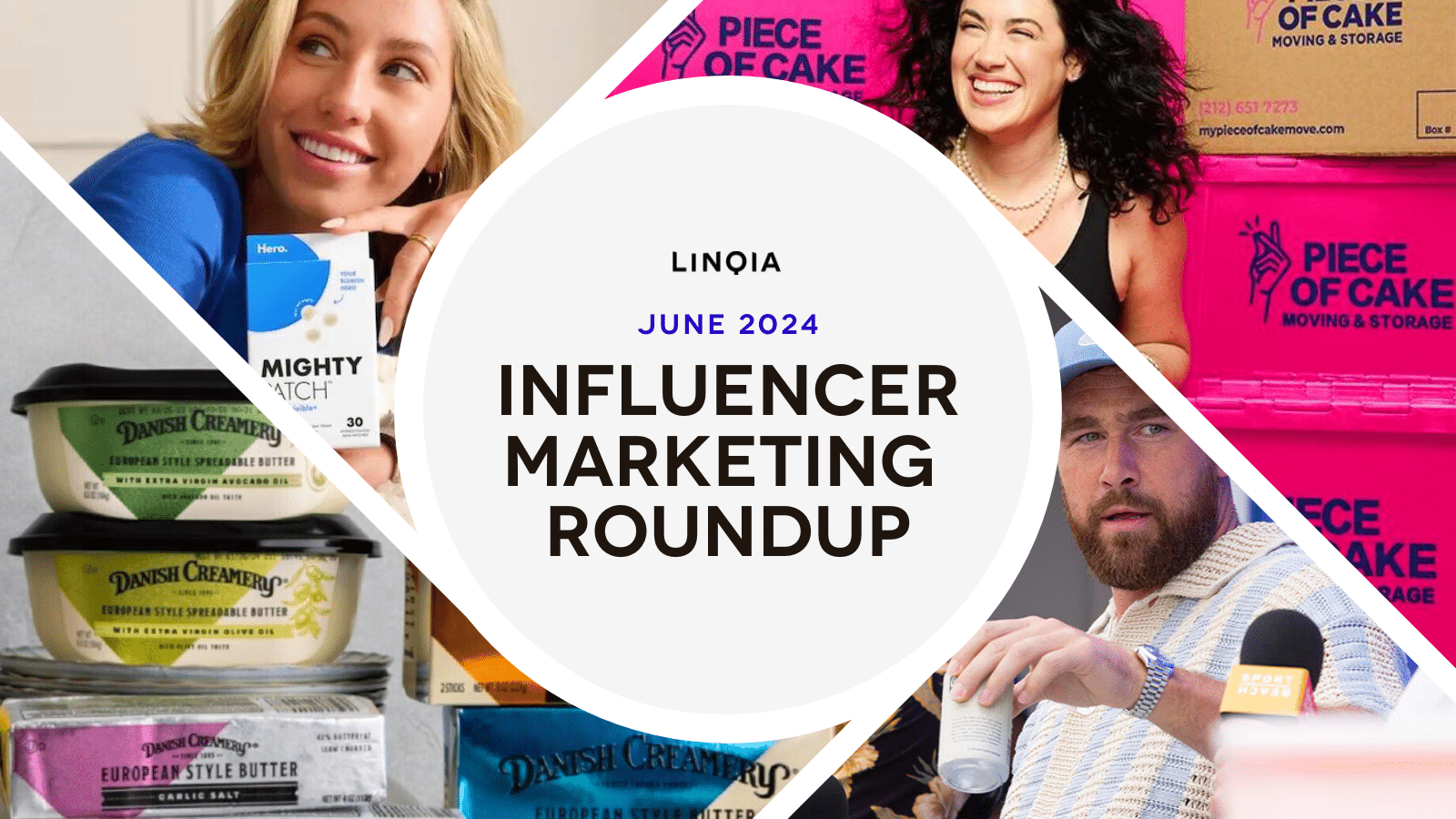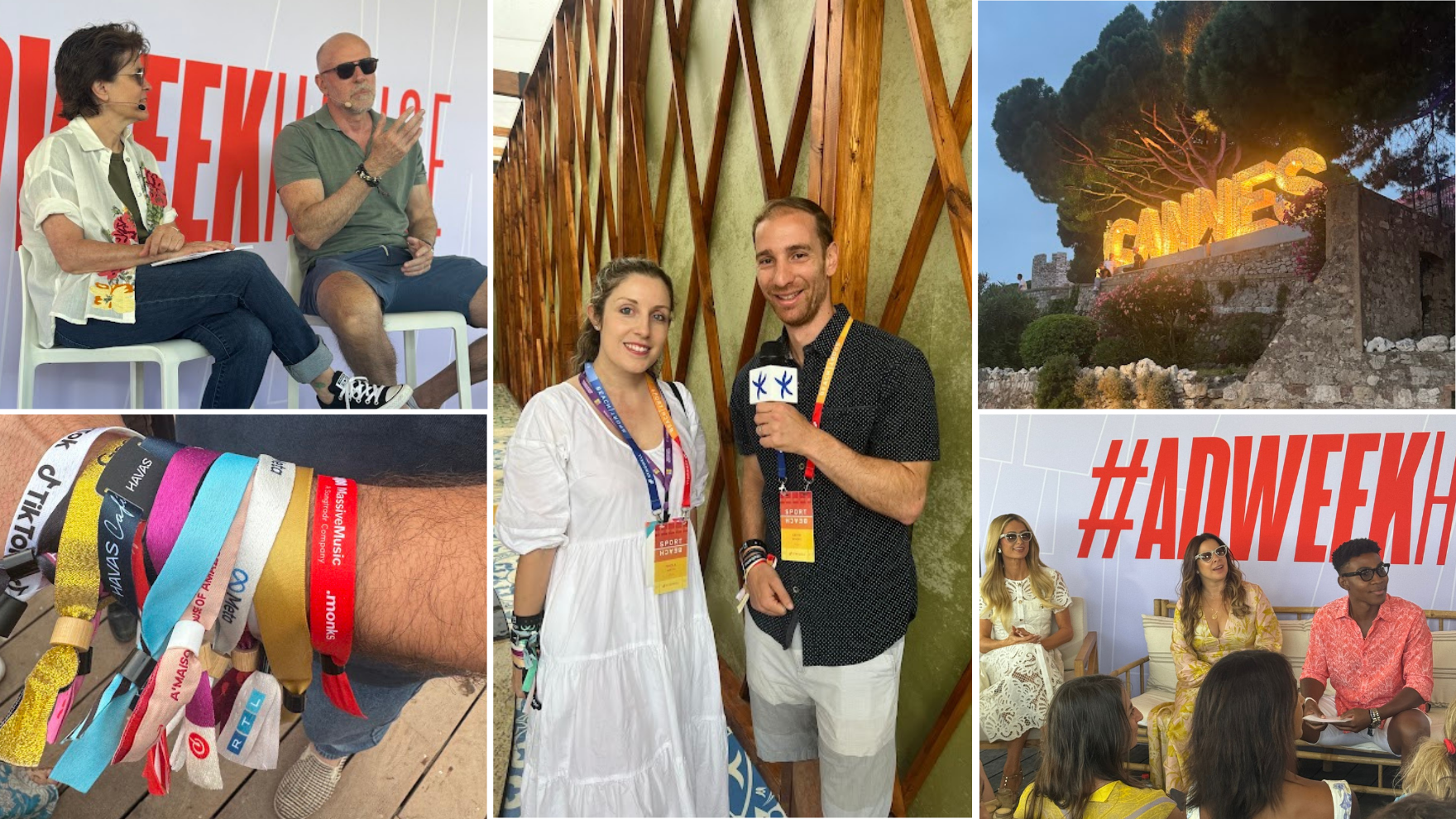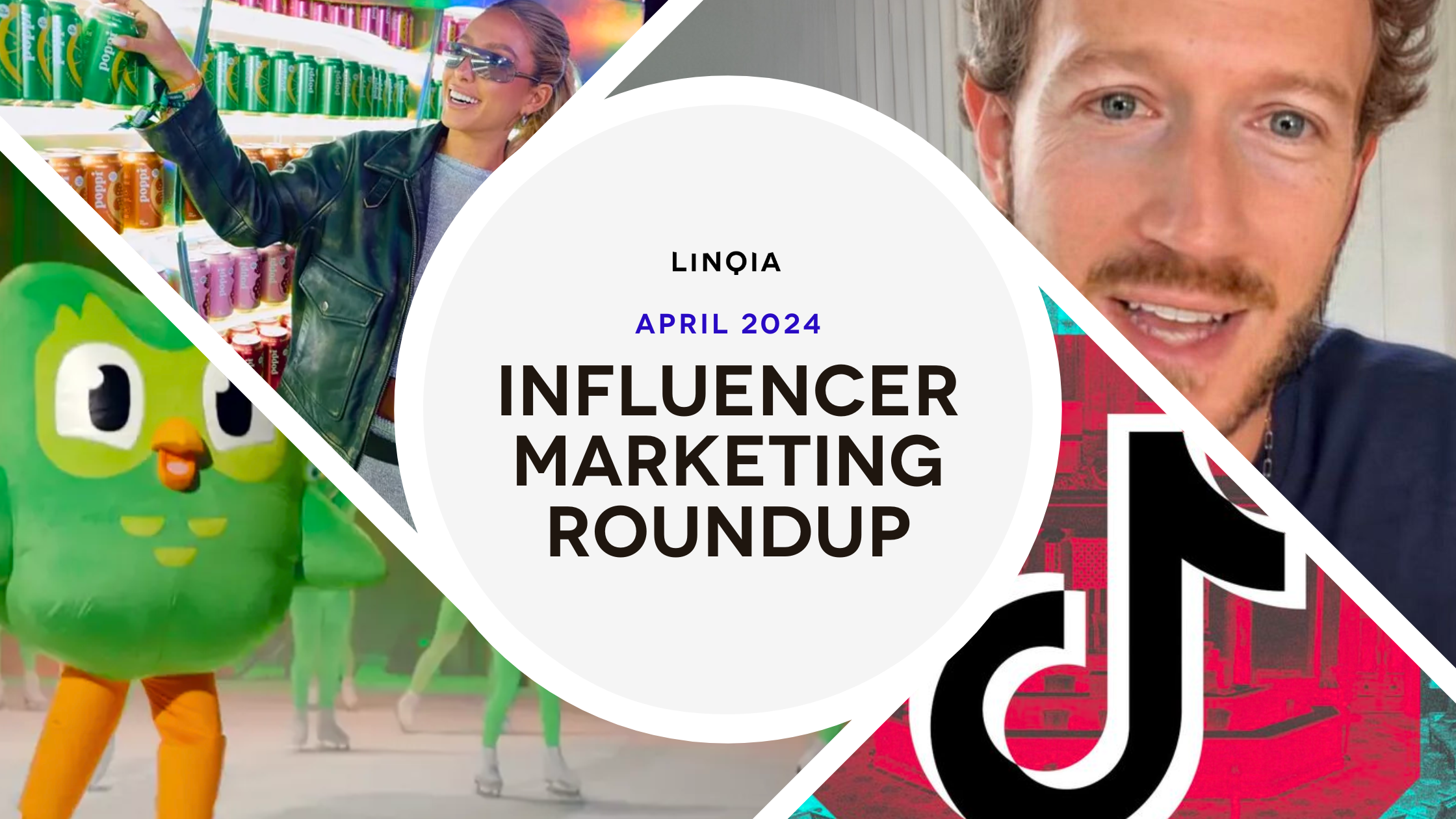Top News and Stories
Below are Linqia’s favorite stories shaping our industry.
TikTok plans to ban links to outside e-commerce sites and shut down storefronts, all while Shops is on track to lose more than $500 million in the US this year.
TLDR: A lot happened in the month of August for TikTok when it comes to commerce. The platform is clearly looking to realign eCommerce partners towards its own native shopping elements, as opposed to linking off to third-party hosting sites. It’s a big time investment they are making to be a legitimate retailer that owns the full shopper journey.
TikTok’s algorithm will be optional in Europe
TLDR: TikTok is enabling users in Europe to deactivate its personalized algorithm for “For You” and Live feeds, aligning with the EU’s Digital Services Act. This allows users to view popular videos from various locations rather than personalized content based on their interests. It’s the beginning of what could be a much broader trend in social toward users having more control over the content they are served, and we are here for it.
TikTok adds new required labels for AI-generated content, and Instagram is working to do the same
TLDR: AI content is not going to slow down, and platforms are focused on ensuring the content is tagged and therefore recognizable as computer generated by users. This will help make it easier to address things like deepfakes as AI tools like DALL-E and Midjourney gain steam.
Meta rolls out new tool that shows which influencers brand are working with
TLDR: It’s a bit rough around the edges, but the tool has a lot of potential. Brands and creators can search for accounts and see which influencers they are collaborating with. This will help with competitive intel and influencer discovery for brands, while giving creators an ability to see what brands are actively working with influencers and if they are the right type of partner.
Meta releases new multilingual AI translation model across almost 100 different languages.
TLDR: This could be one of the biggest revenue opportunities for creators. We’ve already seen MrBeast start to perfect this on YouTube, testing his audio dubbing tech on 11 top videos in 11 languages. Being able to translate videos means earnings from ad revenue can be multiplied by sharing across many more non native language geographies, and brands can have their content viewed across the world without language barriers.
Instagram is internally testing the ability to create 10 minute Reels and letting creators highlight comments in their stories
TLDR: IGTV is back… well kind of. It’s just an internal test, but 10 minute videos would put Instagram on the same plane as TikTok, and closer to direct competition with YouTube. We also love the comments features, as it’s another step by Instagram to let creators engage more intimately with their fans.
Threads Adds New Features and officially launches a Web App
TLDR: Threads is certainly getting closer to Twitter parity, but is that exciting enough to drive new users and bring back the huge majority that have dropped off? We are guessing not, and the app is still missing basic features like DM’s, trending topics/hashtags and creator monetization to attract influencers. Here’s a nifty comparison of threads & X for those keeping score.
YouTube will no longer allow clickable links in Shorts descriptions, but will now allow up to 14 links on your channel profile, and previews a new option to link shorts clips to longer video uploads
TLDR: YouTube is yet another platform trying to get rid of links, this time in the name of cutting down on spam. That’s going to make affiliate programs much more difficult to execute. At least creators and brands can have more links in their channel profile, and connecting shorts clips to longer video uploads is a brilliant way to make shorts work harder for driving subs.
Musk said X won’t take a cut of any creator subscriptions until $100k in lifetime earnings.
TLDR: After creators reach $100k, X will take 10% of their earnings. This is welcomed news to creators, although not exactly the best offer on the table given some platforms still take no cut without any stipulations. But Musk also said he would speak to Apple CEO Tim Cook to try to reduce the 30% fee that Apple takes from purchases, including most subscriptions, made through apps downloaded from the App Store. And that would be a major win for all (well except Apple).
X Significantly Reduces the Requirements of Its Creator Ad Revenue Share Program
TLDR: Now creators need to be subscribed to X Premium or Verification for Organizations,
have at least 5 million post impressions over the past three months (down from 15 million at program launch), and have 500 followers in the app. This certainly makes it much easier to qualify, but the payments will likely not even be enough to offset the cost of X Premium for the vast majority of creators.
X will no longer allow advertisers to promote their accounts within the platform’s timeline
TLDR: This was a very common way to attract new followers and was once a $100M business for Twitter. But while follower ads are easy to sell, they are static and don’t leverage any of the multimedia tools, like video, that X is trying to lean into. Musk is putting his money where his mouth is on this one.
Musk announces X will remove blocking feature
TLDR: This one is a head scratcher and probably not enforceable given Apple and Google’s app store rules around blocking. Blocking is an important way for creators and brands to be able to manage their communities, something muting won’t be able to replace. Another miss for Musk, and an interesting one considering Twitch will soon allow users to prevent blocked or banned users from viewing their streams.
Amazon offers influencers $25 for videos, leads to creator backlash
TLDR: Amazon is taking a lot of heat for their offer to pay influencers to create videos for $25 a pop on their recently launched Inspire platform. The company clearly wanted the focus to be on the bigger $12,500 payout for 500 videos, but influencers quickly took to social to call out the ridiculous offer. Let’s see if Amazon revisits the payout strategy amongst the backlash or if they hold strong..
LinkedIn Rolls Out Brand Partnership Tags and auto follow on Newsletters subscribers
TLDR: now when a member subscribes to your newsletter it will trigger an auto-Follow from your Profile. This is hugely valuable and removes the need to build separate followings on the profile and newsletter. Partnership tags is also a clear indication that LinkedIn is getting much more serious about influencer marketing. This is a channel that no brand should sleep on.
Get Paid to Watch Ads on This Hate-Free Social App, Launching in the US
TLDR: It wouldn’t be a month in social without news of a new social platform. WeAre8 aims to offer an alternative to hate speech and misinformation, with an ad model that lets people opt in and get paid to watch ads. That money can then be withdrawn or directed to charitable causes such as Feeding America, Save The Children and Water.org. The platform has ambitious plans to attract 80 million people in its first two years, but we are as skeptical on this one as the many other new platforms that drew press attention over the last year.
The Creators Guild of America launches to protect the rights of digital creators
TLDR: Amidst SAG’s new ambitions to attract influencers and creators, a new group has emerged that plans to provide members with benefits like accreditation for their projects, education, career mentorship, job opportunities and networking events. The CGA also plans to launch a database that provides a record of creators’ work, similar to Amazon’s IMDb movie and TV database. Members pay a $99 annual fee, while associate membership is offered for free but with fewer benefits. There is a very clear opportunity for unionization in the creator economy, but so far it doesn’t seem like any group is offering enough value to attract the masses.
Brand Influencer Highlights:
- Cetaphil leans into makeup artists as the next wave of skin-care experts
- Cetaphil is shifting its marketing strategy by collaborating with makeup artists as experts. In April 2023, Cetaphil partnered with makeup artists Alexx Mayo, Hung Vanngo, and Priscilla Ono for various campaigns. By working with makeup artists, Cetaphil aims to make its consumers feel more comfortable using their products as a skincare base, especially when used by notable figures like celebrities. The collaborations have proven successful, with high engagement rates and positive feedback.
- How Polaroid is using influencers to pitch analog imperfection to Gen Z
- As the use of artificial intelligence and augmented reality filters continue to rise, Polaroid is pitching its products as relief from an overly digital world.
- By working with photographers of various influence and experience, the brand aims to showcase not only the imperfections and creative possibilities that come from the analog perimeters of its products
- How Häagen-Dazs met its $1.5M commitment to underrepresented creators
- In the aftermath of the global protests against racism and police violence in 2020, many marketers aimed to promote diversity and inclusivity through their brands. However, over the past three years, the momentum behind these efforts has waned, with some facing pushback and legal challenges. Häagen-Dazs, unlike many, stood out with its commitment to supporting diversity. In March 2021, the ice cream brand pledged $1.5 million over three years to back diverse creators, successfully fulfilling this commitment by May
- Partnership with She Is The Music led to DJ sets for Häagen-Dazs events, and a collaboration with Allies in Arts resulted in a mural that became part of the brand’s out-of-home efforts. Häagen-Dazs continued its commitment by involving creators like Tyrell Hampton in its ad campaigns and fostering long-term relationships with them
- Peacock put an episode from the show “Killing It” on TikTok – The episode is available in five separate videos, each ranging from three to eight minutes long.
- DTC founders as influencers—behind the marketing risks and rewards
- To Repair Brand Image in the Face of Climate Change, Fossil Fuel Companies Turn to Influencers
- Top NCO says social media influencers can give US military a recruiting boost
- Ramón “CZ” Colón-López, the senior enlisted adviser to the chairman of the Joint Chiefs of Staff, emphasized the importance of using social media influencers to boost military recruiting efforts in the highly competitive landscape. With only a small percentage of young Americans qualifying for and showing interest in military service, Colón-López believes influencers on platforms like YouTube and TikTok, who have a service connection, can effectively reach potential recruits under the age of 25
Collective Voice survey shows influencers already planning for the holidays
TLDR: Nearly 50% of influencers are already getting into the holiday spirit and planning out their social media content for the upcoming holiday season. This means brands hoping to ink holiday deals with influencers are running out of time to act. Summer seems to be the time where those deals should be made.




